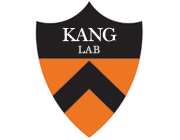EGF-like ligands stimulate osteoclastogenesis by regulating expression of osteoclast regulatory factors by osteoblasts: implications for osteolytic bone metastases.
Type
Epidermal growth factor (EGF)-like ligands and their receptors constitute one of the most important signaling networks functioning in normal tissue development and cancer biology. Recent in vivo mouse models suggest this signaling network plays an essential role in bone metabolism. Using a coculture system containing bone marrow macrophage and osteoblastic cells, here we report that EGF-like ligands stimulate osteoclastogenesis by acting on osteoblastic cells. This stimulation is not a direct effect because osteoclasts do not express functional EGF receptors (EGFRs). Further studies reveal that EGF-like ligands strongly regulate the expression of two secreted osteoclast regulatory factors in osteoblasts by decreasing osteoprotegerin (OPG) expression and increasing monocyte chemoattractant protein 1 (MCP1) expression in an EGFR-dependent manner and consequently stimulate TRAP-positive osteoclast formation. Addition of exogenous OPG completely inhibited osteoclast formation stimulated by EGF-like ligands, while addition of a neutralizing antibody against MCP-1 exhibited partial inhibition. Coculture with bone metastatic breast cancer MDA-MB-231 cells had similar effects on the expression of OPG and MCP1 in the osteoblastic cells, and those effects could be partially abolished by the EGFR inhibitor PD153035. Because a high percentage of human carcinomas express EGF-like ligands, our findings suggest a novel mechanism for osteolytic lesions caused by cancer cells metastasizing to bone.

